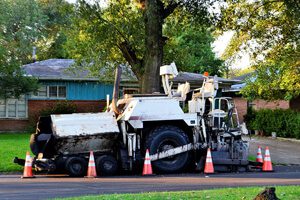
A key use-case for data sharing is managing assets and devices. This report comes from a recent study published by the Smart Cities Council of Virginia cities and counties.
If we dive straight into the significance of asset management, it keeps city operations running smoothly. Integrating intelligent solutions with existing legacy systems leads to optimising infrastructure. This shapes smart and responsive governance that engages citizens in the management of their city.
A system of sensors that collect valuable data is key to device and asset management. It enables understanding the citizens better and in turn improving public service. By monitoring city assets the councils get aware of the city needs. They can better allocate resources to enhance the efficiency of the management system.
But such smart city applications need to follow a proper protocol. The applications need to be financially and environmentally sustainable, boosting economic growth. And this happens with the increase in the efficiency and value of public services and exploiting business opportunities. One of the best examples under this category is advanced traffic management.
More of the real-world cases of such asset management strategies are explored next!
Evaluating Maintenance Of Public Park Assets
The City of Marion in South Australia has deployed smart sensors in playgrounds and parks. City council has initiated this with the goal to maintain current park equipment and improve the planning of future parks. But the ultimate intention is to improve the public experience by understanding how people use city assets.
We take, for example, the Jervois Street Park where several smart sensors are installed. SAGE Automation was involved in helping the city answer particular questions. Which equipment is most used? What times are they being used? How does the weather affect usage? And so on.
The City of Marion has more than 160 parks. With these devices, it requires to demonstrate appropriate public funding. And here, data alone can help make well-informed decisions around how future parks should be planned or created. As per SAGE, these devices call for a two-minute installation. There are no gateways or side infrastructure needed to operate. The city council can see the results live on a web dashboard.
SAGE hopes that in the future, such an asset management approach will lead to a reduction in public liability. When specific equipment is not being used or less used, it might be due to a fault. When the council receives an alert on this, it immediately can take action thereby improving the public experience.
The Outcome Of Reactive Maintenance In Derbyshire


A few years ago, Derbyshire County in England faced challenges in managing city assets. As per Angela Glithero, the council received reports of potholes or other road defects. And they used to send the crew out for repair. But the protocol they followed was complicated with an inconsistent paper system. As a result, they couldn’t easily identify which defects the crew were repairing every day.
Angela and her team realised the key to overcome the challenge. They determined to engage citizens and collaborate with them via an integrated information system. As a part of the initiative, Derbyshire County created a new office called ‘Highways Hub.’ Here the staff is responsible for reactive maintenance scheduling. Other tasks include registering customer inquiries, processing license, managing temporary traffic, coordinating work activities, etc.
More importantly, the information technology supporting the Highways Hub is the new Single Asset Management System (SAMS). The system is based on Pitney Bowes Confirm Intelligent Infrastructure Management Software which is part of the Location Intelligence suite of solutions.
The benefit of using this system was that Derbyshire County had already been using Confirm software to input and route customer inquiries. As per Angela, they explored many products, but they found the most effective way was to stick with Confirm software. Pitney Bowes helped in completely re-engineering the system from start to finish.
The next integration was the Confirm asset register, the central repository for the SAMS asset data. This register automatically logs in residents reports that come through websites or phones and emails received by the Highway Hubs team. The next is ConfirmWorkzone. Highway Hubs uses the system to schedule repairs, coordinate road closures, and plan road maintenance.
On the road, the repair crew uses Pitney Bowes ConfirmConnect on their mobile devices. This enables them to stay up to date with their work schedules, log reports, and images of completed work. And at the Highway Hub, the team is able to see crew location, the start time of their job, and the number of jobs completed.
With this intelligent system in place, Derbyshire County Council is seeing tremendous improvement and benefits. Before integrating SAMS, repair crews were able to complete four jobs a day. But now, they are able to do eight jobs. Even the repair backlog has reduced by 62%. Most urgent repairs get done within two hours while other repairs are done more quickly.
Overall, this reactive asset management system is helping to make people’s life more enjoyable.
How To Manage Smart City Assets Proactively?
Jarret Campbell from AVEVA explains how smart cities can learn from predictive asset management followed by a smart water utility. This kind of maintenance system reduces costs as well as disruption. Many water utilities and cities have legacy systems monitoring assets. It is commonly seen that they use a solution procured a decade ago. And at the same time, they seek new solutions with the latest technology. But they don’t have any integration between both which leads to operations running without any coordination.
Barcelona with its proper use of data solved this issue. It consolidates data from all these dissimilar systems seamlessly – making them as a whole. So before planning to manage assets, it is important to understand this situation.
In general, Jarret Campbell explains steps to manage city assets effectively. We have explained them in brief.
- Identify the assets that you need to connect, to begin with. You can do this by starting with one department.
- Obtain insights into what legacy systems are already being used by different departments. And find out how they work. This helps when you attempt to integrate these systems for communication.
- While inventorying assets and legacy systems, talk to other departments and local utilities in your city. This helps in important stakeholder management.
- Prioritise the city’s needs. Find out what situations will have a greater effect on city operations. Here, AVEVA recommends following a risk-based approach.
- Now, connect the identified city assets to sensors and systems that can read performance and provide alerts to city personnel.
- The next step is to mobilizing the city workforce. After receiving alerts, the workforce should be able to respond accordingly.
Further, to improve the response of the workforce, AVEVA offers ‘step by step’ checklists and functions. These enable your workforce to enter data, scan barcodes and upload relevant images. This ensures that the workforce is fully empowered to respond in line with the laid protocol or strategy.
In simple words, predictive asset management connects the existing physical assets with IoT devices and data analysis. These advanced smart city technologies help in keeping everything operating smoothly. This enables them to show a prompt response to the situation and prioritise their efforts to prevent failure. This avoids future problems and allows citizens and tourists to make the most of a city’s beauty – the assets.


































